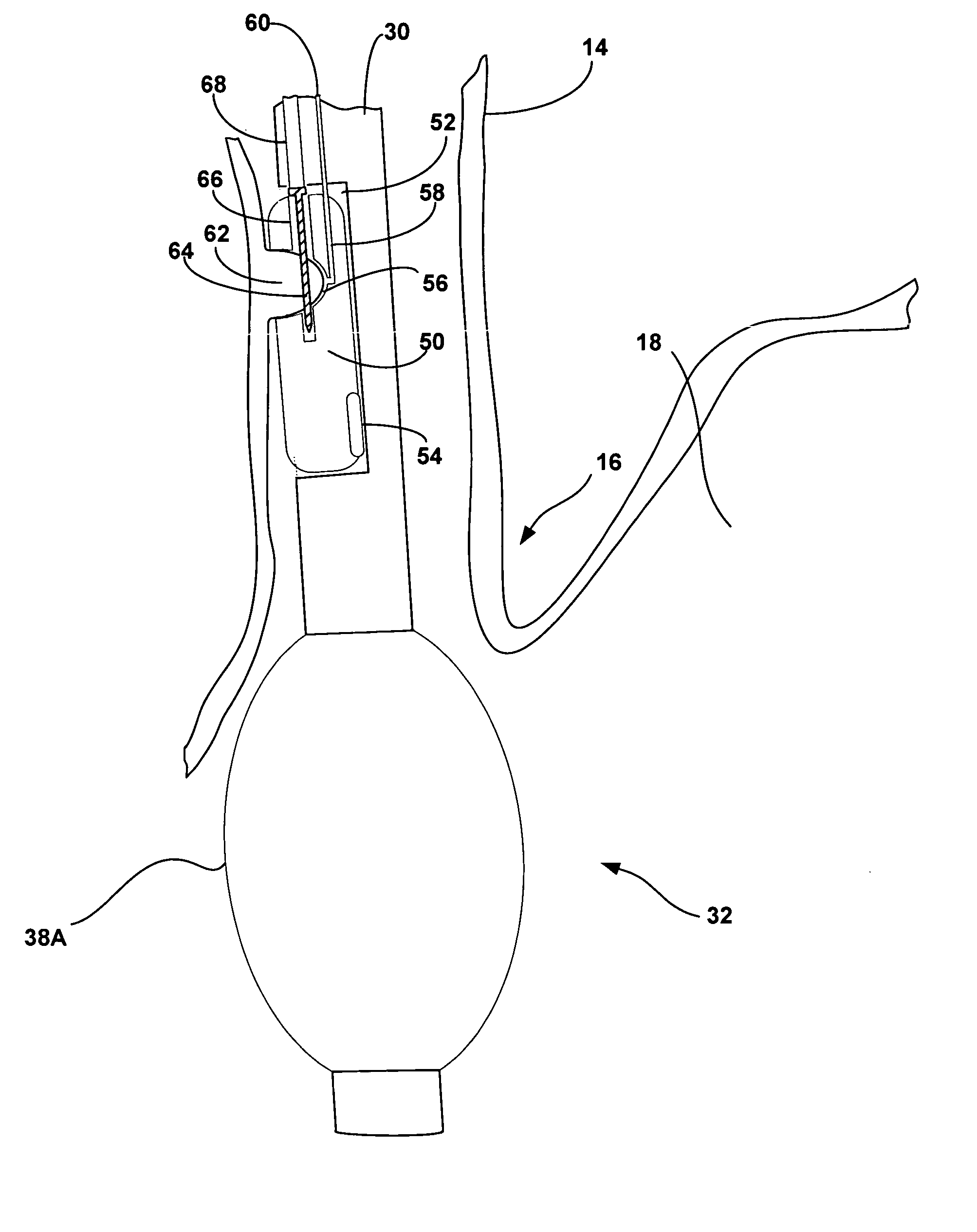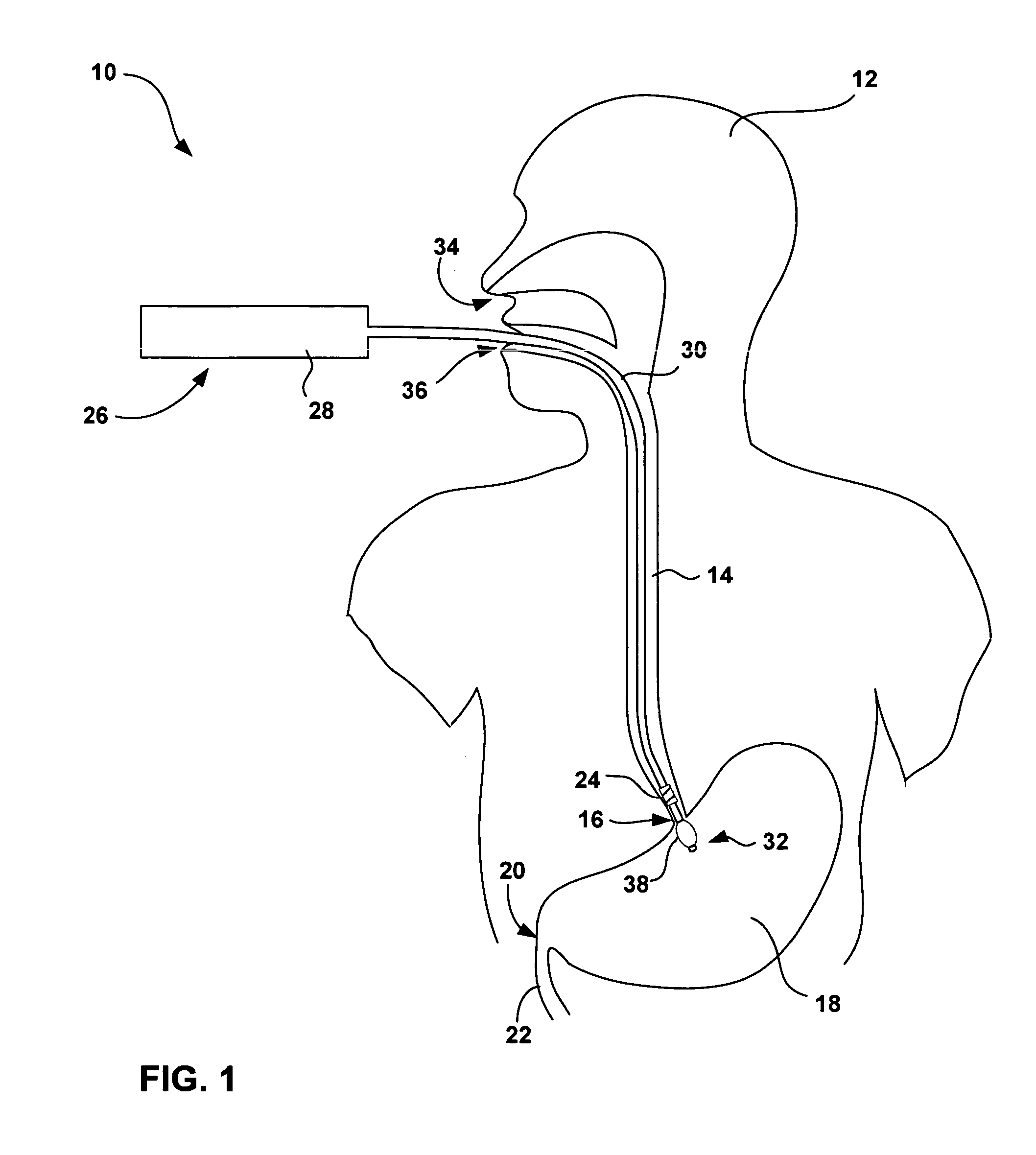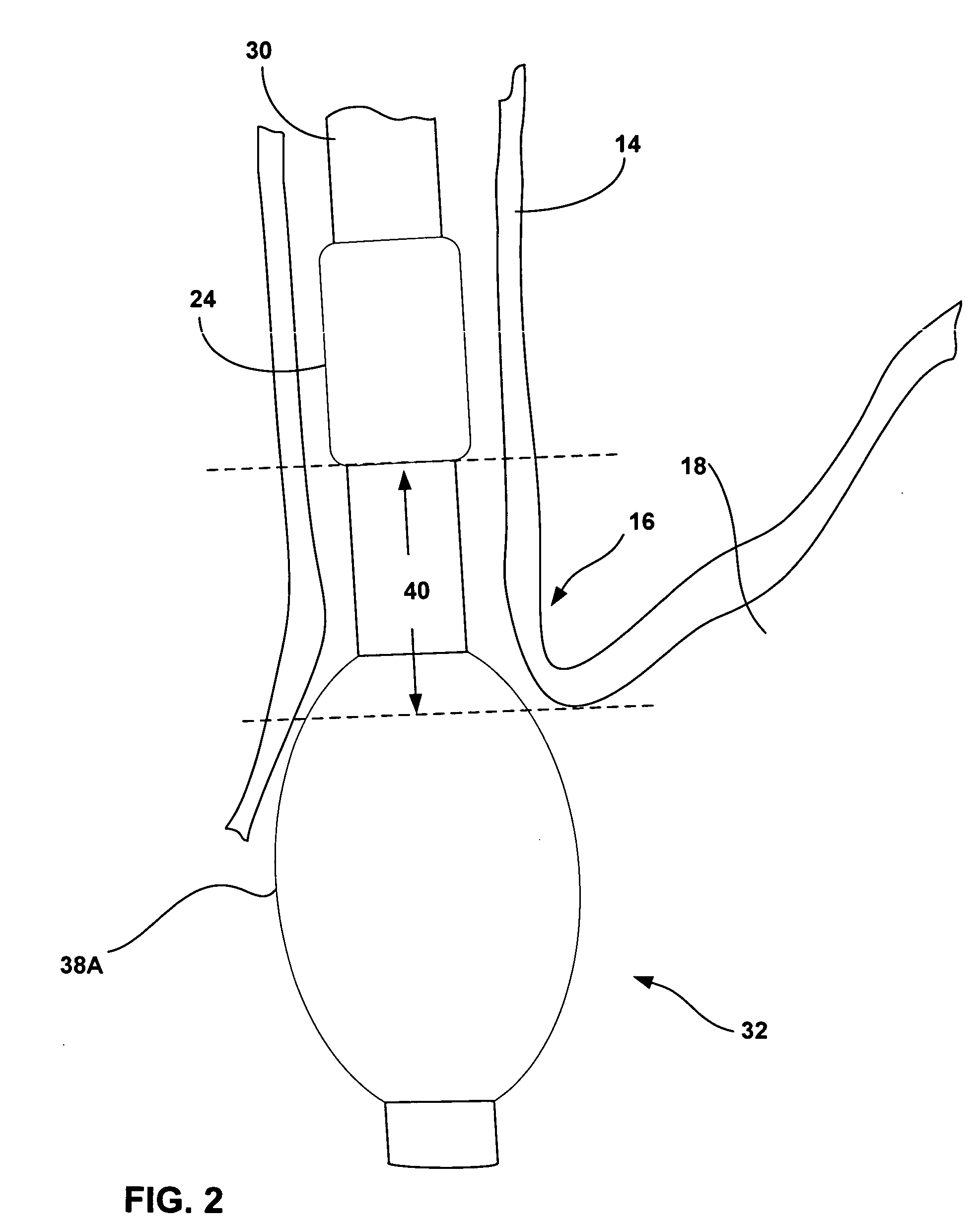Esophageal delivery system and method with position indexing
a position indexing and esophageal technology, applied in the field of esophageal delivery systems, can solve the problems of inability of existing esophageal delivery systems to achieve precise positioning of medical devices, affecting the accuracy of medical device placement, etc., to achieve convenient and accurate placement of medical devices, improve accuracy, and facilitate the effect of quick, convenient and accurate placemen
- Summary
- Abstract
- Description
- Claims
- Application Information
AI Technical Summary
Benefits of technology
Problems solved by technology
Method used
Image
Examples
Embodiment Construction
[0035]FIG. 1 is a schematic diagram illustrating an esophageal delivery system 10 shown in conjunction with a patient 12. As will be described, esophageal delivery system 10 is configured for esophageal delivery of any of a variety of medical devices to precise locations within an esophagus 14 of patient 12. The medical devices delivered by esophageal delivery system 10 may be configured for diagnosis or treatment of GERD, and may comprise monitors, stimulators, drug delivery devices, bulking devices, thermal delivery elements, surgical devices, or other devices.
[0036] In accordance with the invention, esophageal delivery system 10 incorporates an expandable fixation element that permits precise positioning of the medical device relative to an esophageal feature such as the lower esophageal sphincter (LES) 16 at the entrance to stomach 18. In other embodiments, esophageal delivery system 10 may be configured to achieve precise positioning in the vicinity of pyloric sphincter 20 at ...
PUM
 Login to View More
Login to View More Abstract
Description
Claims
Application Information
 Login to View More
Login to View More - R&D
- Intellectual Property
- Life Sciences
- Materials
- Tech Scout
- Unparalleled Data Quality
- Higher Quality Content
- 60% Fewer Hallucinations
Browse by: Latest US Patents, China's latest patents, Technical Efficacy Thesaurus, Application Domain, Technology Topic, Popular Technical Reports.
© 2025 PatSnap. All rights reserved.Legal|Privacy policy|Modern Slavery Act Transparency Statement|Sitemap|About US| Contact US: help@patsnap.com



